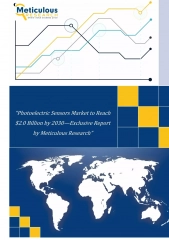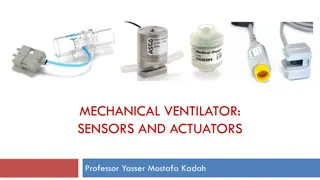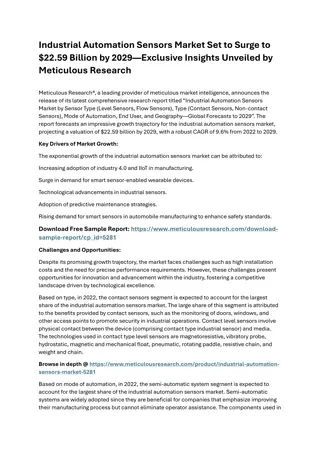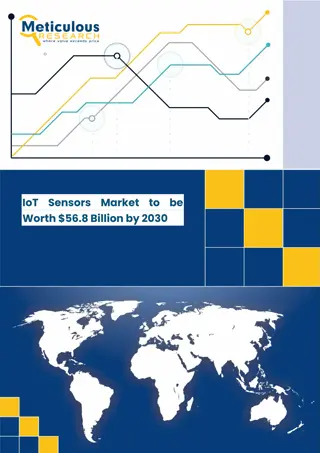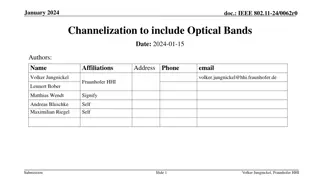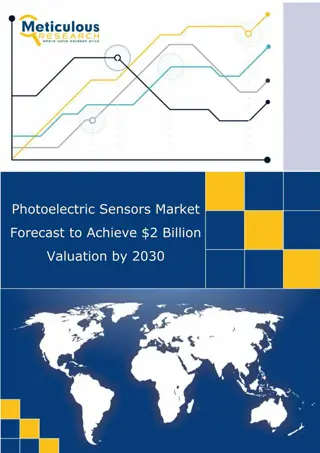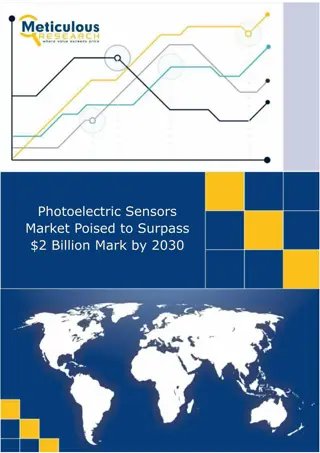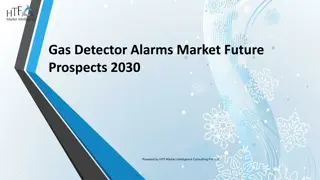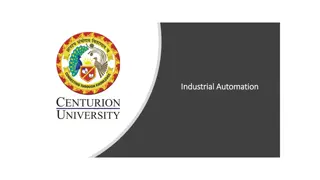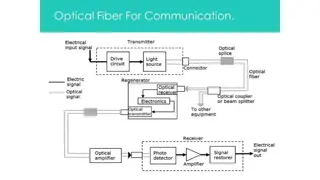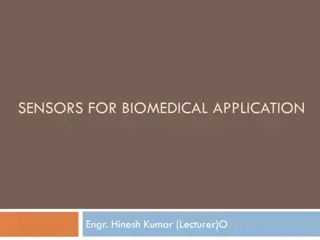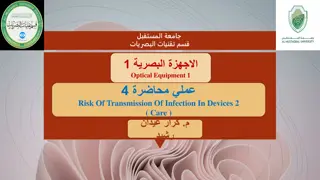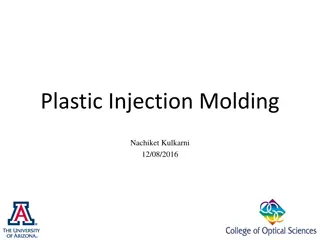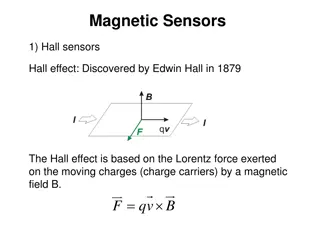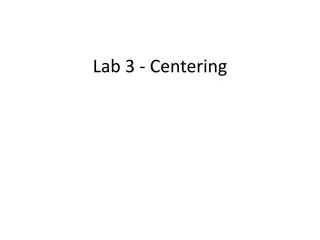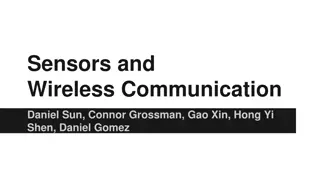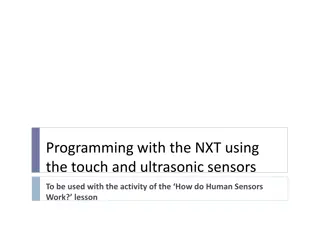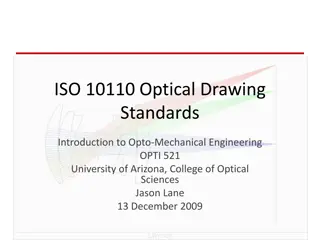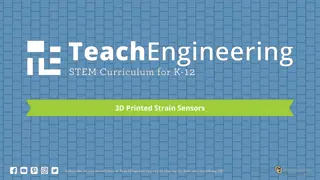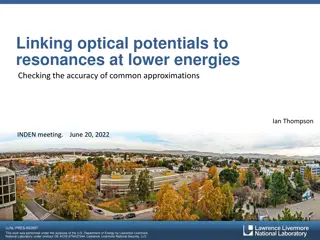Photoelectric Sensors Market to Reach $2.0 Billion by 2030—Exclusive Report by Meticulous Research
Photoelectric Sensors Market by Sensing Type (Diffuse-reflective Sensors, Retro-reflective Sensors), Sensing Distance, Structure (Amplifier Built-in, Power Supply Built-in), Beam Source, Output, End Use, and Geography - Global Forecast to 2030\n
1 views • 5 slides
Understanding Mechanical Ventilator Sensors and Actuators
Explore the essential components of mechanical ventilators, including sensors like pressure and flow sensors, actuators, and oxygen sensors. Learn about the functions and characteristics of these sensors and how they contribute to the operation of mechanical ventilators designed to assist patients w
6 views • 20 slides
Industrial Automation Sensors Market Set to Surge to $22.59 Billion by 2029
Industrial Automation Sensors Market by Sensor Type (Level Sensors, Flow Sensors), Type (Contact Sensors, Non-contact Sensors), Mode of Automation, End User, and Geography - Global Forecast to 2029
2 views • 2 slides
IoT Sensors Market - Global Opportunity Analysis and Industry Forecast (2023-203
IoT Sensors Market by Offering (Image Sensors, RFID Sensors, Biosensors, Humidity Sensors, Optical Sensors, Others), Technology (Wired, Wireless), Sector (Manufacturing, Retail, Consumer Electronics, Others), & Geography - Global Forecast to 2030\n
3 views • 4 slides
Smart Sensors Market
Smart Sensors Market by Component (Transceivers, Amplifiers), Technology (Optic, Ultrasonic), Application (Remote Monitoring, Wearable Devices), Sensor Type (Image Sensors, Pressure Sensors), End User (Automotive, Retail, BFSI), and Geography- Global Forecast to 2030\n
2 views • 6 slides
Channelization to Include Optical Bands in IEEE 802.11 Standards
This document discusses the proposal to incorporate optical bands into the channelization framework of the IEEE 802.11 standard. It aims to align the channelization approach for integrated LC with that of mm-wave technology in the IMMW scope. The contribution highlights recent works, emphasizing the
2 views • 11 slides
Photoelectric Sensors Market Forecast to Achieve $2 Billion Valuation by 2030
This comprehensive market analysis delves into the diverse landscape of photoelectric sensors, considering various parameters such as sensing type (including diffuse-reflective sensors and retro-reflective sensors), sensing distance, structure (with options like amplifier built-in or power supply bu
0 views • 5 slides
Photoelectric Sensors Market
This comprehensive market analysis delves into the diverse landscape of photoelectric sensors, considering various parameters such as sensing type (including diffuse-reflective sensors and retro-reflective sensors), sensing distance, structure (with options like amplifier built-in or power supply bu
0 views • 4 slides
Understanding Semiconductor Sensors and their Applications
Semiconductor sensors are versatile devices that utilize semiconductor materials like silicon for detecting and measuring various non-electrical quantities. These sensors leverage the unique properties of silicon, such as high tensile strength, Young Modulus, and resistance to corrosion, making them
1 views • 26 slides
Gas Detector Alarms Market Future Prospects 2030
Global Gas Detector Alarms Market Breakdown by Type (Electrochemical sensors, Catalytic sensors, Infrared sensors, Photoionization sensors, Others) by Modality (Portable, Fixed) by End-Use Industry (Oil & Gas, Chemical & Petrochemical, Metal & Mining
1 views • 8 slides
Optical Properties of Optically Active Compounds
Circular dichroism and optical rotatory dispersion are important techniques for studying the optical properties of optically active compounds. Circular dichroism measures the differential absorption of left and right circularly polarized light components, while optical rotatory dispersion studies th
0 views • 17 slides
Understanding Industrial Automation Components and Sensors
Explore the world of industrial automation through field instruments, control hardware, and advanced technology like SCADA software and smart transmitters. Learn about widely used sensors in automation, leading manufacturers, and control hardware such as PLCs and distributed control systems. Dive in
2 views • 8 slides
Understanding Optical Telescope Types and Lens-Maker's Formula
Optical telescopes utilize lenses or mirrors to collect and focus light for imaging celestial objects. The lens-maker's formula is crucial for determining the focal length of lenses, considering factors like index of refraction and radii of curvature. Different lens configurations and materials help
0 views • 17 slides
Overview of Optical Fibre Technology and Applications
Optical fibre technology, spearheaded by Dr. Prabodh Sahai Saxena, revolutionizes communication systems through light transmission. This cutting-edge technology utilizes fibre optics made of glass or plastic to carry light signals, offering advantages like high bandwidth, low signal loss, and no ele
0 views • 20 slides
Evolution of Optical Technology: From Telegraph to Photonic Integrated Circuits
The journey of optical technology evolution spans from the invention of the telegraph in 1836, through the introduction of optical fibers in 1978, to the development of photonic integrated circuits in the present era. Key milestones include the advent of optical amplifiers in 1990, the emergence of
0 views • 70 slides
Fiber Optic Communication System Overview
This article presents a detailed explanation of a point-to-point fiber optic communication system, outlining the process from voice conversion to signal transmission and reception. It discusses the advantages and limitations of optical communication systems, along with numerical examples related to
5 views • 11 slides
Optical Equipment Safety Review and Hazard Analysis
This document provides an in-depth review of the safety considerations for the ATST optical equipment, focusing on potential hazards associated with the M2 Mirror, Heat Stop Assembly, and other critical components. The Preliminary Hazard Analysis identifies various risks, causes, and recommended act
0 views • 13 slides
Overview of Laser Delivery Systems for Surgical Procedures
Institute of Laser for Postgraduate Studies at the University of Baghdad, led by Assist. Prof. Dr. Lutfi Ghulam Awazli, focuses on laser delivery systems in surgical procedures. The systems discussed include optical fibers, articulated arms, hollow waveguides, and free beams. Optical fibers, compose
0 views • 10 slides
Understanding Optical Storage Technology
Optical storage technology originally designed for audio offers a capacity of 650MB, providing over 70 minutes of audio playback. Data is recorded digitally on a polycarbonate disk's surface as microscopic pits. The disk is organized in a spiral track with sectors of the same length arranged in bloc
5 views • 16 slides
Advances in Optical Bench Technology for Gravitational Wave Detectors
This content discusses the latest advancements in optical bench technology for gravitational wave detectors, focusing on precise measurements of back-scattered light, development of new optical cavities, and testing of Sagnac interferometers. Key objectives include improving suspension controls, red
0 views • 13 slides
Optical Alignment Using Beam Triangle Opti 521 Phil Scott
This presentation delves into the intricate process of optical alignment using a beam triangle, focusing on defining optical and mechanical axes, addressing alignment challenges, degrees of freedom for various elements, and the importance of setting up a beam triangle for accurate alignment. The con
0 views • 14 slides
Transimpedance Amplifiers in CMOS Technology for Optical Communications at 40 Gb/s
This research by Joseph Chong at Virginia Tech delves into the use of transimpedance amplifiers (TIAs) in CMOS technology for optical communications operating at a data rate of 40 Gb/s. The study outlines the motivation behind the project, the role of TIAs in optical receivers, TIA circuit topologie
0 views • 52 slides
Understanding Sensors in Biomedical Applications
Explore the world of sensors in biomedical applications with insights on transducers, active vs. passive sensors, common sensor types, error sources, and examples of sensors used in medical instruments. Learn about the functions and distinctions between sensors, transducers, and actuators, along wit
3 views • 64 slides
Proper Care and Maintenance of Optical Equipment to Prevent Infections
Regular examination and proper cleaning of tonometer prisms are essential to reduce the risk of transmitting infections during eye examinations. Disinfection and sterilization processes are crucial in maintaining optical equipment hygiene. Different disinfectants and physical methods can be used to
0 views • 24 slides
Overview of Low-Cost Sensors for Atmospheric Composition Measurement
This publication provides an insightful overview of low-cost sensors for measuring atmospheric composition, covering topics like sensor technologies, applications in atmospheric sciences and air quality management, and evaluation methods. It emphasizes the importance of not only the technical perfor
0 views • 17 slides
Optical Frequency Interferometer Bench Analysis
Detailed examination of the optical setup for an Optical Frequency Interferometer (OFI) system, including the input/output configurations with various optical components such as prisms, crystals, and wave plates. The analysis focuses on the path and behavior of beams within the system, considering r
0 views • 14 slides
Evolution of Optical Fiber Technology
Optical fiber technology has a rich history starting from John Tyndall's demonstrations in 1870 to the development of flexible fiberscopes by Hopkins and Kapany. This technology revolutionized communication systems and medical diagnostics, enabling the transmission of information through thin glass
0 views • 85 slides
Optical Image Formation: Principles and Conditions
Understanding the principles and conditions governing optical image formation, including the role of broad bundles of rays, wave surfaces, magnification ratios, and axially-symmetric optical systems. Explore the conditions for imaging line segments, optical path lengths, and the general criteria for
0 views • 13 slides
Optical Testing Setup Procedures for Vacuum Windows and Polarizers
Detailed procedures for optical testing setups involving vacuum windows, polarizers, rotation stages, translation stages, photodiodes, scopes, power meters, and more. The process includes preparing the initial state, rotating analyzers, monitoring transmission, and verifying the direction and magnit
0 views • 5 slides
Understanding Plastic Injection Molding for Optical Components
Plastic injection molding is a cost-effective method for mass-producing optical components, offering an economical alternative to glass. This process involves designing molds, considering factors like shrinkage and surface equations, ensuring smooth mold flow, and regulating fluid flow through gates
0 views • 12 slides
Optical Fiber Calibration System & Adaptive Power Supply by J. Cvach
Introduction to an optical fiber calibration system and adaptive power supply developed by J. Cvach from the Institute of Physics, ASCR, Prague. The system includes an LED driver, notched fibers, and adaptive power supply for various applications, such as the calibration of the CALICE AHCAL and LHCb
0 views • 13 slides
Understanding Hall Effect in Magnetic Sensors
The Hall effect, discovered by Edwin Hall in 1879, is utilized in magnetic sensors to detect magnetic fields by measuring the Lorentz force on moving charges. Hall sensors generate a Hall voltage based on the positive and negative charge carriers present. Integrated Hall sensors provide detailed spe
0 views • 10 slides
Lab 3: Centering Optical Elements & Systems with Precision
Centering optical elements and systems accurately is crucial for optical alignment processes. This lab focuses on using an air bearing rotary table and dial indicators to achieve precise centering. The equipment used includes PSM, displacement indicators, adjustment screws, and magnetic mounts. Prop
0 views • 14 slides
Understanding Semiconductor Sensors in Sensor Technology
Introduction to semiconductor sensors, focusing on the properties of silicon that make it a preferred material for smart sensor development. Discusses the application of semiconductor sensors, planar silicon technology, and modern pressure sensors integrated with silicon diaphragms. Covers the mater
0 views • 15 slides
Understanding Sensors and Wireless Communication in Technology
Exploring the world of sensors and wireless communication through LED technology, electro-optical sensors, chemiresistors, and more. Learn how LEDs work, the principles behind electro-optical sensors, and the implementation of these technologies in various applications. Discover the intricate mechan
0 views • 28 slides
Understanding Nonlinear Optical Processes in Semiconductors
Exploring the complexities of nonlinear optics in the perturbative and non-perturbative regimes, this research delves into the generation of harmonics, optical Kerr effects, and extreme nonlinear optical phenomena utilizing phase-controlled electromagnetic pulses. The work also investigates the inte
0 views • 15 slides
Programming with Sensors: NXT Touch & Ultrasonic Sensors in Action
Explore how to incorporate touch and ultrasonic sensors into your robot programs using the NXT MINSTORMS software. Learn about the wait for command, sensor integration, and enhancing robot navigation with sensors. Get hands-on guidance on utilizing wait for touch and wait for distance commands effec
0 views • 17 slides
Understanding ISO 10110 Optical Drawing Standards
ISO 10110 Optical Drawing Standards provide guidelines for preparing drawings of optical elements and systems, essential for interpreting optical drawings accurately. The standard includes 13 parts covering aspects such as material imperfections, surface form tolerances, and more. Compliance with IS
0 views • 17 slides
Understanding 3D Printed Strain Sensors: How They Work and Their Benefits
3D printed strain sensors are custom-made sensors printed by a 3D printer using materials that conduct electricity. They work by measuring electrical resistance, which changes with environmental conditions. These sensors are cost-effective, easily customizable, and can be integrated into wearable te
0 views • 7 slides
Exploring Optical Potentials and Resonances at Lower Energies
Investigating the accuracy of common approximations in linking optical potentials to resonances at lower energies. The study focuses on neutron reactions with 14N as a test case, transitioning from R-matrix theory to Hauser-Feshbach models and evaluating known levels and level densities. Key topics
0 views • 22 slides
